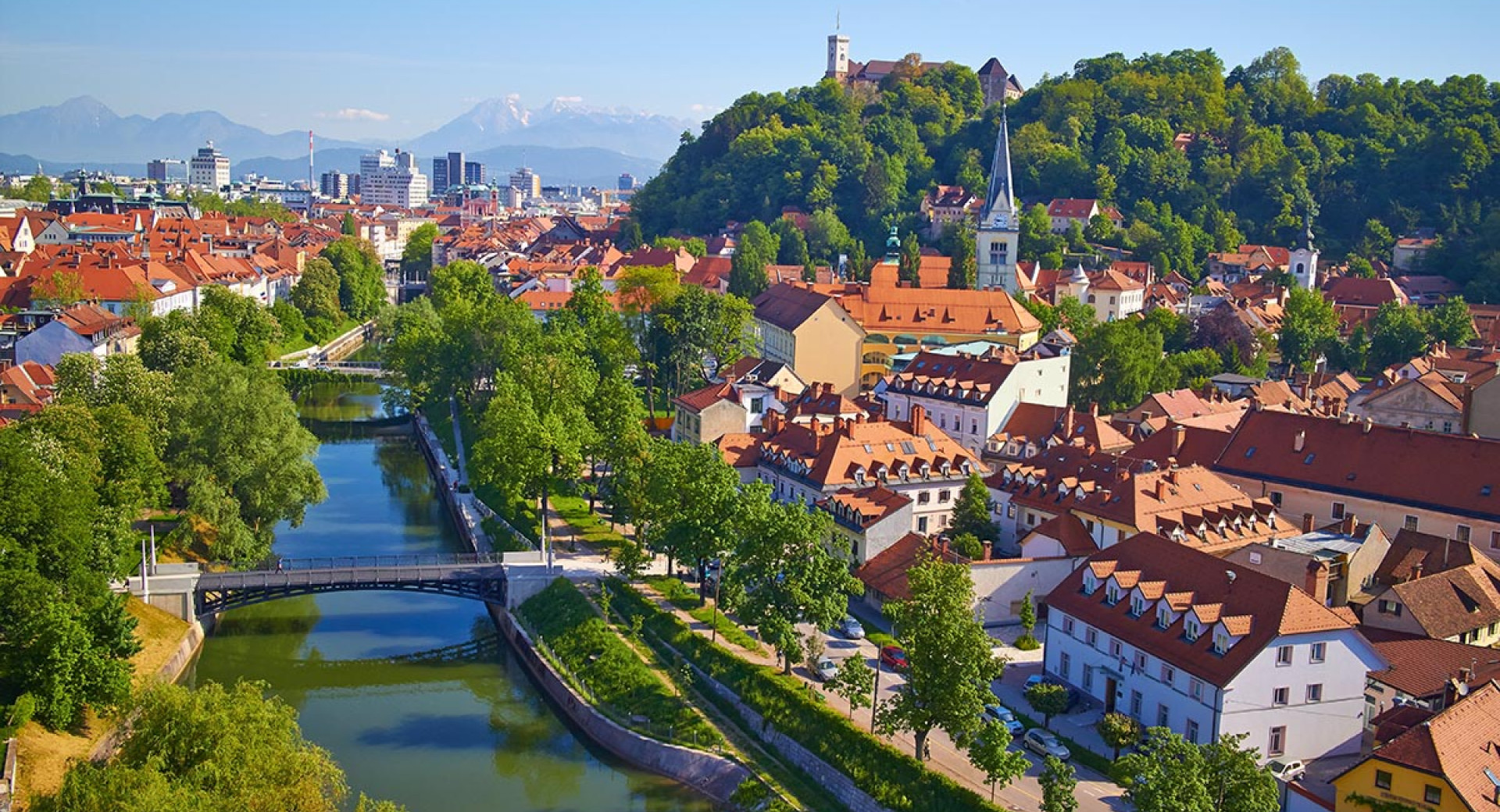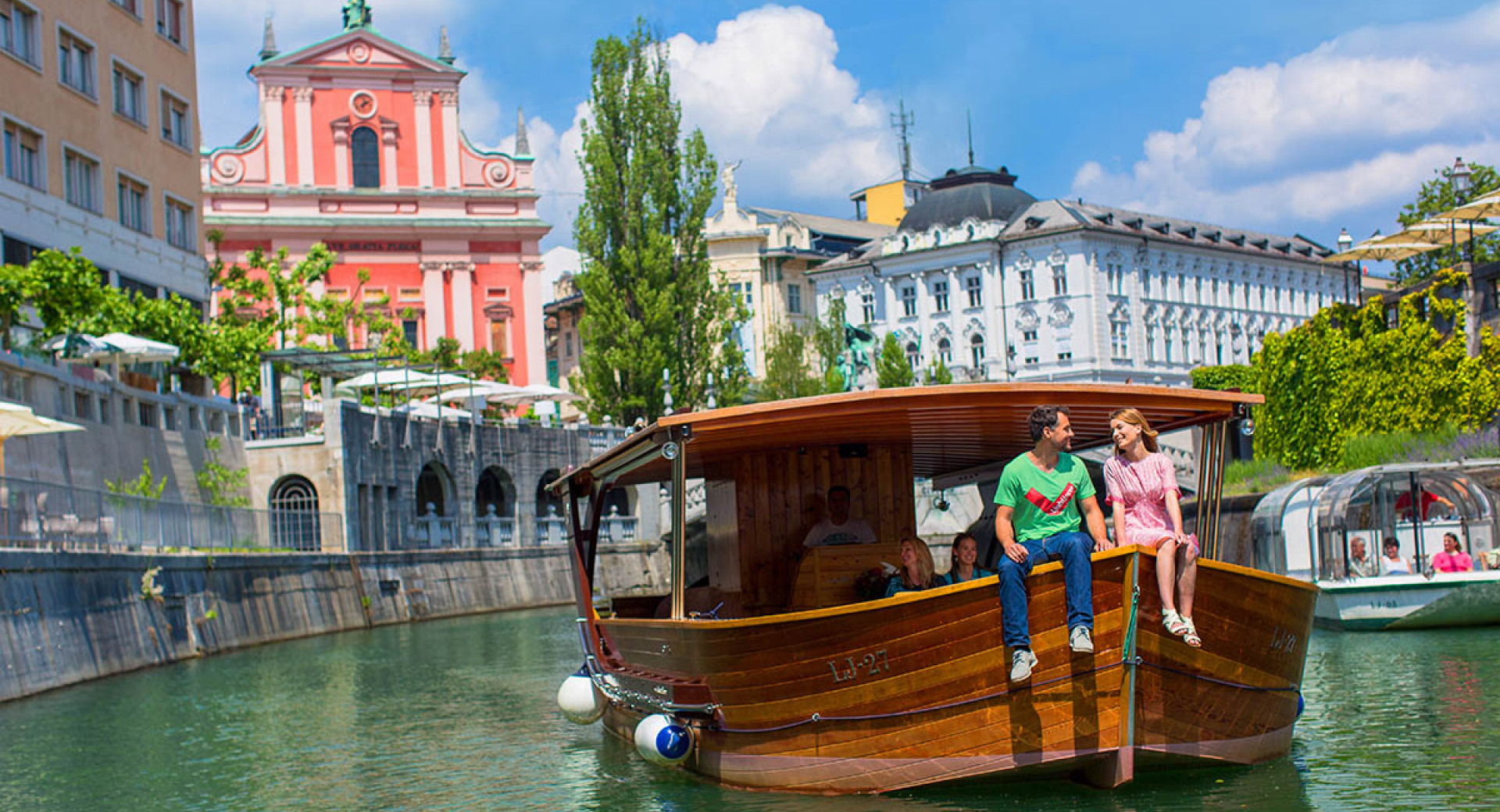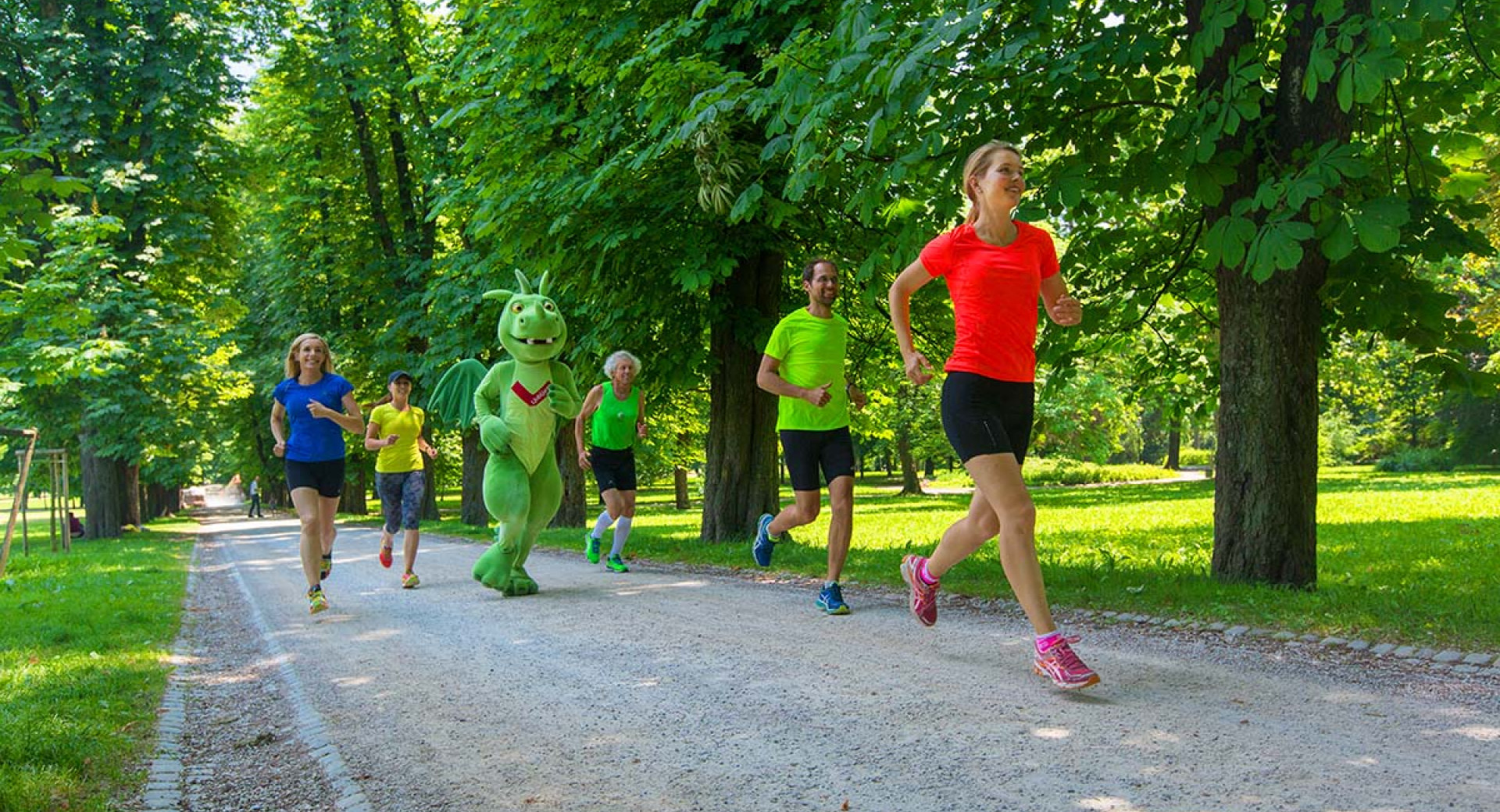Ljubljana, the proud European Green Capital 2016
Ljubljana is a boutique and charming city, capital of Slovenia and the proud holder of the prestigious title European Green Capital 2016. In the past decade, Ljubljana has turned into a lively and exciting city for both its visitors and residents.

As part of its development vision, the city centre was closed for traffic and pedestrian areas were visibly enlarged, thus transforming the city centre into a spacious and comfortable urban space that functions as a cosy living room. This area is filled with cafes, restaurants and green surfaces where visitors can meet locals and enjoy the vibe of the city. Its best benefit is the petiteness, with everything just within walking distance. The residents love to ride their bikes to the green areas in and around the city, so we encourage the visitors to join us in this new green endeavour. A popular bike-sharing scheme, BicikeLJ, is a handy way to do so. Along the Ljubljanica riverbanks one can also find quieter, even romantic spots, under the shade of weeping willows from where a view unfolds on the passing boats, canoes and trendy stand up paddlers. A city with a high cultural profile and a number of international festivals, Ljubljana also offers over one thousand free open-air events in the city centre every year.
For the last decade, Ljubljana has been working hard to achieve high environmental standards. In June 2014, the European Commission announced that the city had been awarded the Official European Green Capital Award 2016. In recent years, the capital has been completely redesigned with sustainability in mind. Transportation in Ljubljana has changed dramatically over the past decade and the city has become more comfortable and more charming for both, tourists and locals. In Ljubljana, you can hop on electric-powered vehicles referred to as “Kavalirs” (Gentle helpers), which offer a free ride for locals and tourists within the expanded pedestrian zones. Cycling has also increased, with over 1.6 million journeys taken this year using a bike-sharing system, BicikeLJ.

© Nea Culpa
By modifying the traffic flow within the city to limit motorized traffic and giving priority to pedestrians, cyclists and public transport, Ljubljana has new green areas, new embankments by the river and a more relaxed atmosphere. Expanded pedestrian zones also offer more space than ever for Ljubljana’s free open-air events with music festivals, street theatre and dance performances, sports events and exhibitions.
Ljubljana is also a city which can be proud of its clean drinking water. Also elsewhere in Slovenia, tap water is of good quality and suitable for drinking. While rambling the streets of Ljubljana, you can quench your thirst for free at public drinking fountains, which operate during the warm months, usually from April to October. Get to know the Ljubljanica River, a river with a colourful history. From Roman times to the construction of the railway in the mid-19th century, Ljubljanica was a major trade and supply route. On its way to Ljubljana, the river flows through the unique natural landscape of Ljubljana Marshes, listed as Unesco's World Heritage in June 2011. Its bed is one of Slovenia's most important archaeological sites. Excavations have yielded objects dating from prehistory to the early modern period. Archaeologists believe that the river once had a cult status. Today, the Ljubljanica River owes its distinctive appearance to the architect Jože Plečnik, who designed the old city centre's river embankments, landscaped tree-lined riverside walks, including the well known weeping willow-lined terraced walk alongside the Trnovski pristan embankment, and built or renovated several of the city's bridges, including the famous Trnovo Bridge, Cobblers' Bridge and Triple Bridge.
Treat yourself with an adventure and attend a stand-up paddling session right in the middle of the city centre – on Ljubljanica River. Ljubljana is perhaps the world’s only capital city, which offers its visitors a unique opportunity to experience the old city centre’s picturesque bridges, façades and embankments from a completely different perspective, and the best thing about it is, that is available to everyone, even to complete beginners.
The heart of Ljubljana’s social life, also called the city's lounge, are the Ljubljanica river embankments, densely scattered with lively cafés offering outdoor seating. A good way to see the old city centre and its famous bridges, picturesque buildings and vibrant embankments from a completely different angle is to join a tourist boat cruise along the river. In the summer you can hire a canoe and paddle through the city centre.

© Nea Culpa
To relax and enjoy in the urban green areas, explore the Tivoli Park, Ljubljana's largest and most beautiful park, stretching right into the city centre. The park, covering an area of approximately five square kilometres, is crossed by three grand horse chestnut tree-lined walks and landscaped with ornamental flower beds, interesting trees and numerous statues and fountains. The park area blends into the slopes of the Rožnik hill, to which it is connected by several walking paths and a trim trail with several exercise stations along its length.
If you’re into running and walking, The Path of Remembrance and Comradeship would be a great choice for you. The Path encircles Ljubljana, symbolizes dedication to a healthy lifestyle while at the same time is serving as a reminder of the city's history. It is a 35-kilometre recreational path running along the course of the military barbed-wire fence which surrounded Ljubljana during the Second World War. The Path of Remembrance and Comradeship, sometimes referred to as 'The Path along the Barbed Wire' or 'The Green Ring', is mostly paved with gravel, only the sections leading through residential parts of the city are paved with asphalt. Several sections of the pathway are lined with trees. The path is signposted with information boards showing its course and marked with round metal markers built into the paving. Memorial pillars mark the locations of Second World War bunkers along the path.
Established in 1810, the Ljubljana Botanical Garden is Slovenia's oldest cultural, scientific and educational institution operating uninterruptedly since its foundation. The Garden contains more than 4,500 different species and subspecies. One-third of them are endemic to Slovenia, while the rest originate from other parts of Europe and other continents.
In the year 2015, on the first day of summer, five different white rose cultivars were planted by Ljubljana Tourism in the Tivoli Park’s rose garden to undergo a selection process aimed at identifying a pure white rose to be named after the clean and green Slovenian capital. The same year, in June, there was “Ljubljana Rose” selected, which is already planted in parks, at roundabouts and in other public spaces across the city. “Ljubljana Rose” can also be purchased at Ljubljana Botanical Garden for 15,00 Euros.
